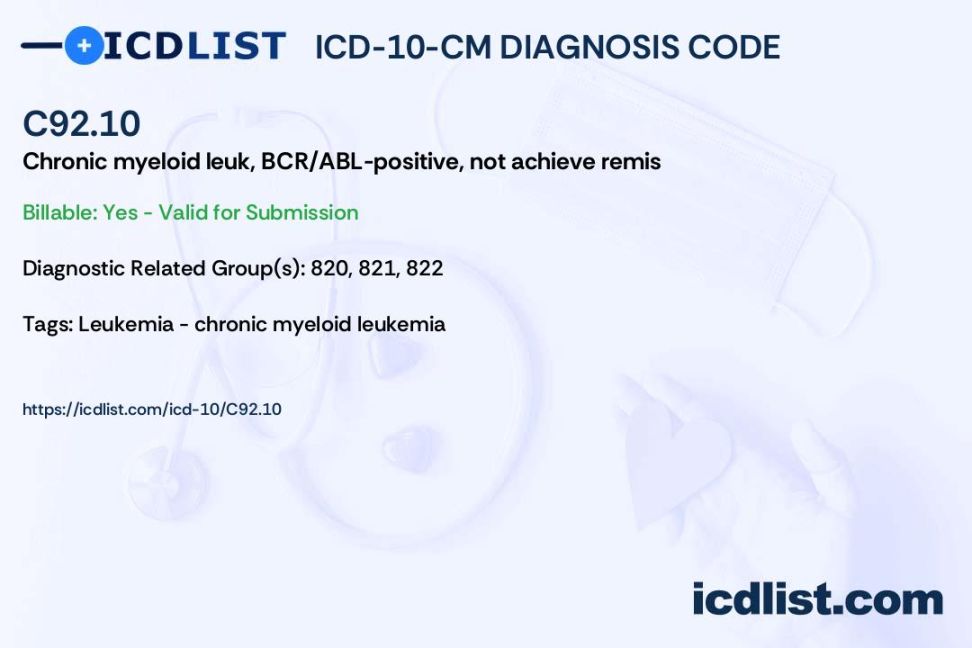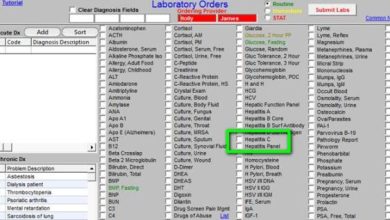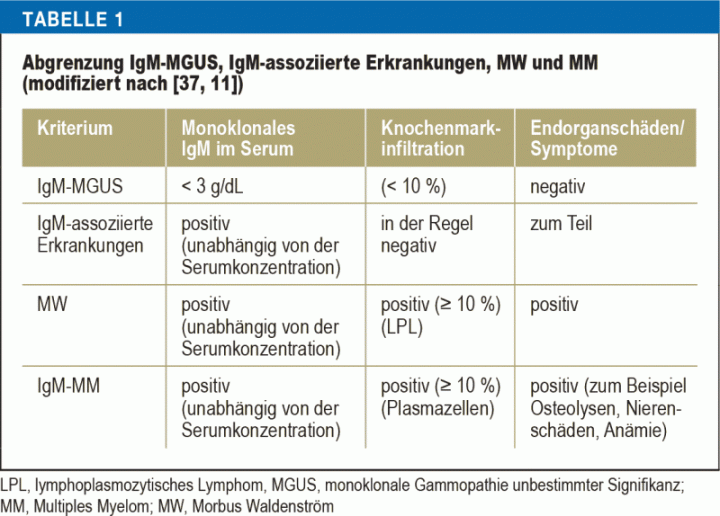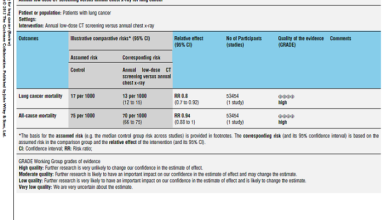Understanding Chronic Myelogenous Leukemia ICD-10 Coding
What is Chronic Myelogenous Leukemia ICD-10?
Chronic Myelogenous Leukemia (CML) is a type of cancer that starts in the blood-forming cells of the bone marrow. It is characterized by the uncontrolled growth of abnormal white blood cells, which can crowd out normal blood cells and interfere with the body’s ability to fight infections. In the ICD-10 coding system, Chronic Myelogenous Leukemia is classified under the code C92.1.
Code Information

The ICD-10 code for Chronic Myelogenous Leukemia is C92.1. This code is used to classify and report cases of CML in medical records and billing processes. It helps healthcare providers and insurance companies accurately identify and track cases of this specific type of leukemia.
Diagnostic Related Groups (MS-DRG)

In the Medicare Severity-Diagnosis Related Group (MS-DRG) system, Chronic Myelogenous Leukemia is classified under MS-DRG 017 – Myeloproliferative Disorders or Poorly Differentiated Neoplasms. This DRG helps determine the reimbursement rates for hospital stays related to CML treatment.
Convert to ICD-9 Code

In the older ICD-9 coding system, Chronic Myelogenous Leukemia is classified under the code 205.10. Healthcare providers may need to convert this code to the newer ICD-10 code C92.1 for accurate reporting and billing purposes.
Code History
The ICD-10 code for Chronic Myelogenous Leukemia, C92.1, was introduced in October 2015 as part of the transition from ICD-9 to ICD-10 coding systems. This update aimed to provide more specific and detailed codes for various medical conditions, including leukemia.
Approximate Synonyms
Other terms that may be used interchangeably with Chronic Myelogenous Leukemia include Chronic Myeloid Leukemia, Chronic Myelocytic Leukemia, and Chronic Myeloproliferative Disorder. These synonyms can help healthcare providers accurately identify and code cases of CML.
Clinical Information
Chronic Myelogenous Leukemia is caused by a genetic mutation in the bone marrow cells, leading to the uncontrolled growth of abnormal white blood cells. Common symptoms of CML include fatigue, weight loss, fever, and enlarged spleen. Diagnosis is usually confirmed through blood tests and bone marrow biopsy.
Causes
The exact cause of Chronic Myelogenous Leukemia is not fully understood, but it is believed to be linked to genetic mutations in the bone marrow cells. Risk factors for developing CML include exposure to radiation, certain genetic disorders, and a family history of leukemia.
Symptoms
Common symptoms of Chronic Myelogenous Leukemia include fatigue, weakness, weight loss, night sweats, and abdominal pain. Some patients may also experience enlarged spleen, easy bruising, and frequent infections due to the suppression of normal blood cells.
Diagnosis
Diagnosing Chronic Myelogenous Leukemia involves a series of blood tests, including a complete blood count (CBC) and a bone marrow biopsy. These tests help healthcare providers confirm the presence of abnormal white blood cells and assess the extent of the disease.
Treatment
Treatment for Chronic Myelogenous Leukemia may include targeted therapy, chemotherapy, radiation therapy, and stem cell transplantation. The choice of treatment depends on the patient’s age, overall health, and the stage of the disease. Regular monitoring and follow-up care are essential for managing CML.
Conclusion
Chronic Myelogenous Leukemia is a type of cancer that affects the blood-forming cells in the bone marrow. The ICD-10 code for CML is C92.1, which helps healthcare providers accurately classify and report cases of this disease. Early diagnosis and appropriate treatment are crucial for managing CML and improving patient outcomes.
FAQs
1. How common is Chronic Myelogenous Leukemia?
CML accounts for about 15-20% of all cases of leukemia in adults.
2. Can Chronic Myelogenous Leukemia be cured?
With advances in treatment, many patients with CML can achieve long-term remission or even be









